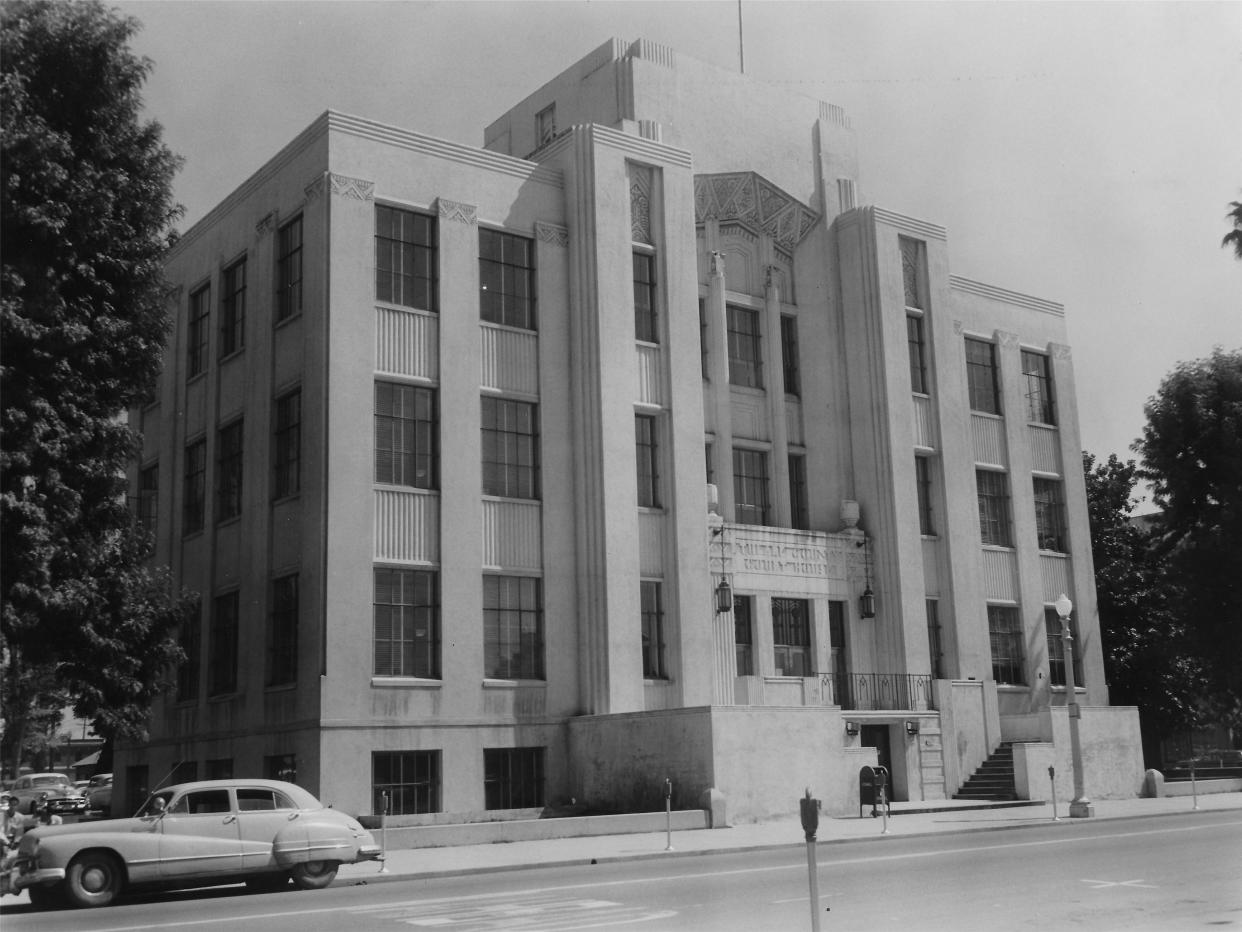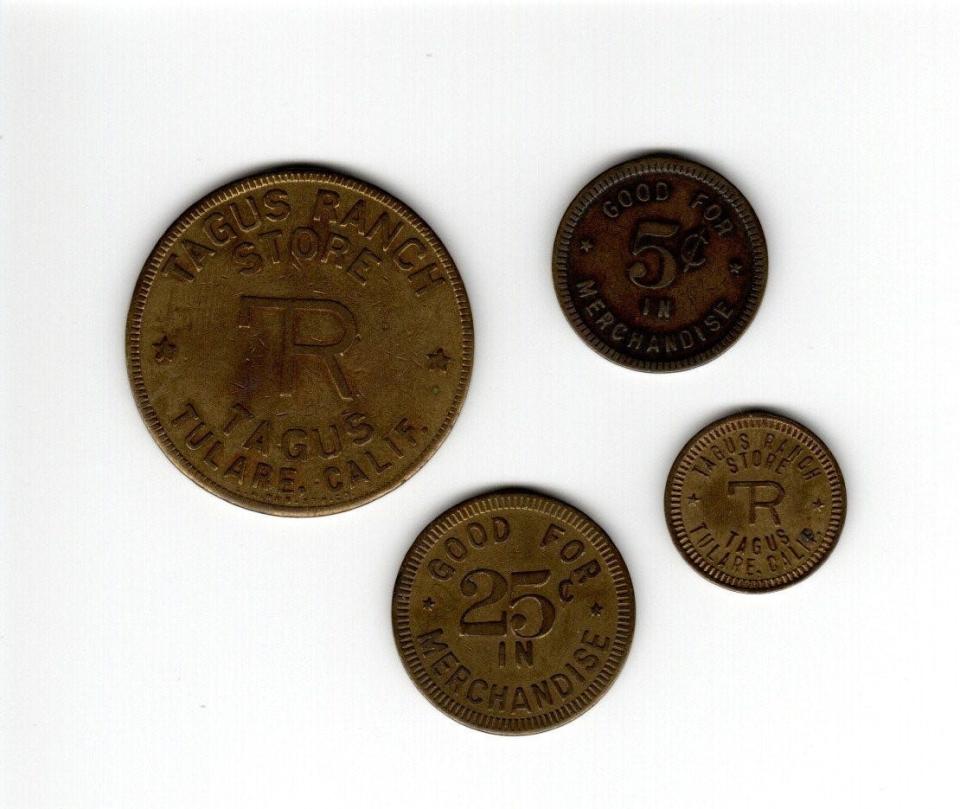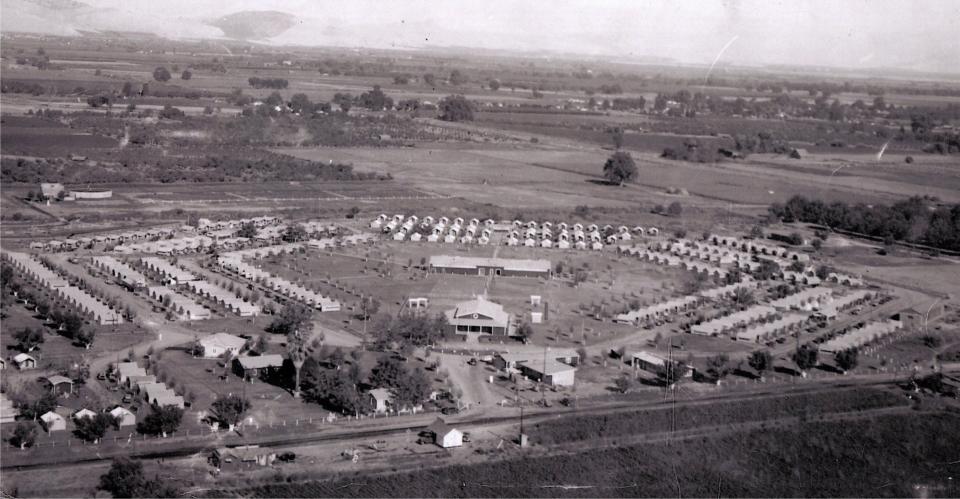Seeing the present in the past: Tulare County Voices at 210 explores Great Depression

Local historian Terry Ommen likes to connect the dots.
His research often leads him to understand how the seeds of the past planted the fruits of the present. One of the most fertile eras for Tulare County was the Great Depression and the 1930s. It included rampant migration, social and natural catastrophes, and often the remedies to those problems with the advent of the social safety net.
Ommen plans to explore some of those events in his talk for “Tulare County Voices@210” with his program, “Voices from the Great Depression: Stories of Tulare County.”
The program will be from 7 p.m. to 8:30 p.m. on Tuesday, Dec. 13 at 210, 210 W. Center Avenue in Visalia. Doors open at 6:30 p.m.
Ommen is Visalia’s preeminent storyteller of local history, and for this program, he is also seeking the stories that his audience can tell.
“My presentation would include some general context history about Tulare County during that time period,” said Ommen, “but my focus would be audience involvement. I would like to hear not only from Dust Bowl migrants and their families that evening but anyone with any Depression-related story.”
Those who attend can also be prepared to see vintage photos and accounts of the era.
Among the events that have attracted Ommen’s interest:
The “Okie migration” of farm families displaced by the Dust Bowl.
“I am told that the Dust Bowl migration was the largest migration of people in American history,” Ommen said. “About 2.5 million people moved out of the Plains States, and of that, 200,000 moved to California. Tulare County received a good share of them.”
Their experiences were recounted in the novels of John Steinbeck, in the music of Woody Guthrie, and the poetry of Tulare’s Wilma McDaniel, the “Okie poet.”
The rise of public works projects and social programs in response to the Depression.
Bigotry and violence, including labor unrest and the rise of the Ku Klux Klan.
Ommen expects to mine the work of all of them.

Ommen also plans to recall the centers of the migrant experience, such as Linnell Camp and Tagus Ranch.
“I have heard some of the stories from many of these dust bowl migrants and others over the years,” Ommen said. “Not all the stories were of hardship, persecution, and dread; some were inspiring and uplifting.”
Those who might have a story to share can contact Ommen at histerry@comcast.net.
The Times-Delta/Advance-Register asked Ommen to comment on some of the features of his work in historical research and the elements he plans to talk about at 210.
VTD: What part of your work as a historian do you most enjoy doing? And what is the most minor favorite thing you do as a historian?
Ommen: Clearly, my favorite part of what I do is the research —the discovery.
As a history buff, what I try to do is understand how people lived in earlier times. Once I focus on a topic, then get an “aha” moment, I get a sense of fulfillment and satisfaction.
As a simple example: Some early Visalia maps show a street in downtown Visalia named “Sakie,” in place of the street’s true name of Acequia. That made no sense to me.
How does that happen?
One day I looked into the word Acequia and discovered it meant “ditch” in Spanish. Now that made sense to me, as the first man-made waterway in the community was a ditch that was cut from the Matthews Grist mill race, going west down the street that became Acequia.
So one mystery was solved. Acequia was named that because of the water ditch that was dug along its path.
That still did not answer the Sakie problem. When I heard the pronunciation of the word Acequia, I was amazed! It is pronounced “a SAKE ia” using the correct Spanish pronunciation. Early map makers heard the Spanish pronunciation and mistakenly thought they heard “Sakie” and put that on their map. This was done by map makers who were obviously not local.
A couple of “aha” moments there for me.
My least favorite part is organizing the stories, etc., in such a way. Not being very technically savvy means a lot of manual files and cross-referencing.
VTD: History is constantly being revised because of fresh revelations, often by dedicated researchers like you. What things have you discovered that changed local history, so to speak?
Ommen: So true about history being dynamic! A big one for me is the famous picture purported to be Nathaniel Vise, the namesake of Visalia. So many good historians have used the single photo of him repeatedly. I have done the same thing.
One day a family member contacted me and said the picture was wrong and gave proof - our picture of Nathaniel Vise is actually William Francis Turner! Photos have been misidentified so much that it seems impossible to set the record straight.
VTD: You have chosen the 1930s in Tulare County as your focus for this year’s program for “Tulare County Voices @210.” What makes this era so intriguing?
Ommen: I picked the 1930s (the Great Depression era) this year as a topic because so many first- and second-generation experiencers are leaving us.
The Great Depression, for many years, was an event that caused people to shiver with anguish, having either gone through it or heard about it through their parents. Nowadays, the concept of the 1930s Depression, at least for the younger crowd, just doesn’t have the same effect or understanding.
I hope the folks who attend our program at 210 on Dec. 13 will be willing to share their stories before the memories fade away.
The 1930s era in Tulare County was, in some ways, “ground zero” for important societal changes and experiences.
Inspire: Many researchers say they encounter an “A-ha! moment” in the course of their work. Could you share an “A-ha! moment” you had in your encounter with 1930s history of Tulare County?
Ommen: I think for me, over the years, as I examined the Ku Klux Klan, I kept waiting to find evidence of violence by the Visalia Knights of the Ku Klux Klan Lodge No. 48 or other county KKK lodges, but “reported” violence was very scarce. There were lots of social events, picnics, parades, etc., and it included, I would say, towns in Tulare County and beyond. I found no reported “lynchings” that appeared to be racially motivated.
Of course, the KKK was a very secretive organization, so I’m sure they were active in underground activities, which were not reported.
My take on the Klan locally was that they tried publicly at least to come across like any other service club. I think this, for me so far at least, is an “Aha” moment.

Inspire: What was the high point of events in Tulare County in the 1930s? And what was the low point?
Ommen: One of the high points in Tulare County in the 1930s for me was the opening of the Fox Theatre and the joy it brought to those that could afford to see movies.
Another is Tulare County is and was a “bread basket,” so food was available for most, especially those connected with farms or farmers.
My father was from a Minnesota farm family, and in the 1930s, I remember him saying food was never a challenge for them with cows, pigs, chickens, etc. At least, that was his take as a small child.
Another positive point of the 1930s was the creation of welfare nonprofits. There were a lot of neighbor-helping-neighbor efforts.
Another biggie was the numerous public works projects made possible by the federal government. Buildings were built [such as the Tulare County courthouse, now “The Darling” hotel], and projects like the “Mineral King Bowl” were dug with federal money, hiring teams of horses and men — all done by hand with fairly primitive tools.
One low point would have been workers, especially farm laborers, who oftentimes lacked a voice in the workplace, and that resulted in labor unrest —strikes, violence, and death. Racism was practiced, as in the case of the Exeter Race Riot of 1929. In that event, Filipino workers were “run out of town,” literally.
Inspire: If a typical resident of Tulare County from, say, 1938 [if there was such a thing], were transported to this time, what would most surprise them?
Ommen: Your “typical 1938 resident transported to today” question is a tough one. All revolves around the word “typical.” But I think the number and diversity of government services available to those in need today would surprise everyone.
Inspire: Let’s turn that question around: What would a resident from our time and place find most surprising about 1938?
Ommen: I think today’s individual would find a lack of government services, both in number and diversity. Definitely shock, I’m sure.
Inspire: What local events of the present day will historians be examining 100 years from now?
Ommen: I think COVID, for sure, will be the big topic looking back a hundred years from now. The pandemic has so many aspects — impact on education, economy, relationships, government response, etc.
I’m not sure if this is an event, but ... The unfortunate decline and disappearance of print media, newspapers especially, will also be examined.
How to attend
Terry Ommen will be the featured speaker at the next installment of “Tulare County Voices @210.” His program is “Voices from the Great Depression: Stories of Tulare County,” from 7 p.m. to 8:30 p.m. on Tuesday, Dec. 13, at 210, 210 W. Center Avenue in Visalia. Doors open at 6:30 p.m. This event is free.
Visalia’s Mr. History
Terry Ommen is often recognized as Visalia’s preeminent authority on local history, having inherited the mantle from his mentor, the late Annie Mitchell.
Ommen has written extensively about the history of Tulare County. He is the author of four books and literally hundreds of articles in local publications, including the Visalia Times-Delta, Fresno Bee, Valley Voice and Direct Magazine. He is currently a regular contributor to Lifestyle and The Good Life magazines.
Ommen is a member of several history organizations including Visalia Heritage, Inc., the Tulare County Historical Society and the Wild West History Association.
Although history is Ommen’s first love, it is his second calling. After graduating high school, he enlisted in the U.S. Army and spent three years in the military police corps. After his military service, Ommen obtained a bachelor’s degree from Long Beach State University and a Master’s from Chapman University. In 1972, Ommen joined the Visalia Police Department. He retired in 1997 with the rank of captain.
Ommen and his wife of 50 years, Laraine, have a daughter, Lindsay, and two grandchildren.
Throughout his career in law enforcement, Ommen nurtured his interest in the history of the Old West and Tulare County’s role in it. He has written on a broad range of subjects.
“But as a career lawman, I must admit I have a special interest in the early peace officers and the badmen they pursued,” Ommen said.
For several years Ommen wrote and published a blog called “Historic Happenings,” which remains online at www.visaliahistory.blogspot.com.
This article originally appeared on Visalia Times-Delta: Tulare County Voices at 210 explores Great Depression

